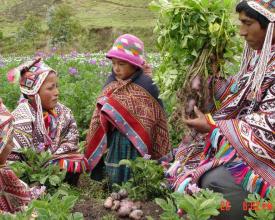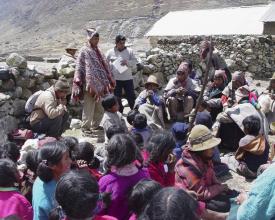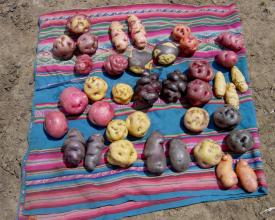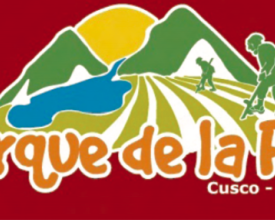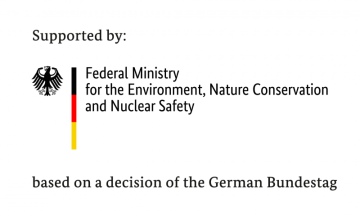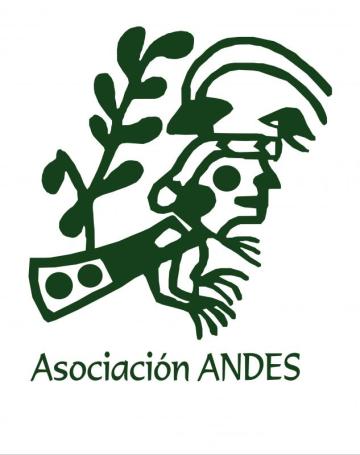
Biocultural preservation, innovation and benefit-sharing for climate change resilience
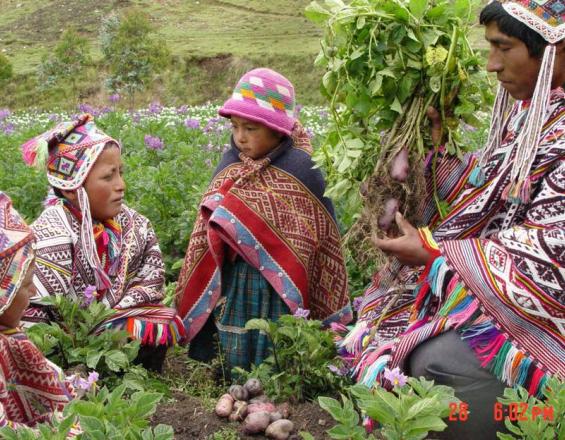
In this project, ANDES (Asociación para la Naturaleza y el Desarrollo Sostenible) provided support to communities in the mountainous Cusco Region of Peru for the establishment and management of a Potato Park, where communities can engage with, preserve and benefit from biocultural heritage. Communities active in the Association of Communities of the Potato Park are supported to preserve native and locally-adapted crop species and to capitalise on this through agrobiodiversity-based microenterprises. Communities’ resilience to climate change is bolstered ecologically by maintaining availability of locally-adapted food crops, culturally by reviving traditional knowledge, and socially by providing ecosystem-based livelihood generating activities. This solution is published as part of the project Ecosystem-based Adaptation; strengthening the evidence and informing policy, coordinated by IIED, IUCN and UN Environment WCMC.
Context
Challenges addressed
Climate change has led to erratic weather, increased temperatures, and late and unpredictable rains. In the Potato Park region, this has reduced both the number of potato varieties that can be grown, and the yield of those that are grown. Pests and diseases have increased. This is exerting pressure on communities already experiencing food insecurity, poor agricultural extension, and limited access to training and financial services. More broadly, extraction and industrial agriculture in the region is placing its biodiversity and culture under strain.
Location
Process
Summary of the process
BBI comprises the Potato Park, which is a territory for safeguarding biocultural heritage. It creates a space for the preservation of genetic diversity and resilient crop varieties; this helps buffer communities against the risk of crop failure from drought, frost and disease. The Potato Park acts as a space where BBII, informal collective trademarking for biocultural innovation such as food and beauty products, can flourish. In turn, BBII acts as a pillar of support for BBI, providing incentive and impetus for sustained protection of local agrobiodiversity. A place-based trademark centering on the Potato Park provides a central point around which communities can gather, leading to social cohesion which also helps to build resilience to the broader challenges posed by climate change. Thus the two building blocks for this solution are mutually reinforcing, sustaining the ecological and social benefits that the full solution offers.
Building Blocks
Potato Park for ecosystem-based adaptation through biodiversity conservation (and safeguarding biocultural heritage)
The Potato Park is a biocultural heritage territory, collectively designed and governed by the communities that live around it. Established in 2002 among six Quechua communities (with 5 still active), the park itself holds over 650 varieties by western scientific classification (or over 1300 by traditional classification), as well as other Andean crops. There are 18 potato varieties resilient to drought and frost, plus one virus-tolerant variety. Thus, the park acts as a gene reserve, and a repository for tools for climate-change resilience.
The park is managed using the traditional aylluvalue system as a model, focusing on protecting the indivisibility and interconnectedness of agrobiodiversity within the park. The governing body, the Association of Communities of the Potato Park, hold the communal land title for the territory. Communities themselves defined the structure and operation of the association, with the support of ANDES, and includes representatives of leadership from each of the five communities covering the park. The association allows the communities to enter into legal agreements and to negotiate effectively as a group regarding any innovations or microbusinesses associated with the park, such as beauty or food products.
Enabling factors
- A repatriation agreement with the International Potato Centre returned 410 locally-adapted potato varieties to the area
- The communal pooling of land facilitates experimentation; this is especially important since climate change is altering farming conditions, for example pushing up the lower planting line for potatoes, and farmers must adapt
- To support the park, a Seed Guardians Group has been established and trained in botanical seed production, transects and multiplication
Lesson learned
- The use of participatory action research in supporting the design and management of the park was central to its success, and facilitated the development of e.g. the equitable benefit sharing agreements, based on customary laws, which underpin biocultural innovation associated with the park
- In restoring and preserving this region’s biocultural heritage, the Potato Park reduces vulnerability to adverse weather events and disease, thus fostering resilience to climate change challenges. Supporting local agrobiodiversity also helps with maintenance of ecosystem services.
Resources
Informal trademarking and equitable benefit-sharing
The informal collective trademarking system was jointly developed by the Potato Park communities (represented be the Association of Communities of the Potato Park) and ANDES, through a joint process including several community meetings facilitated by ANDES researchers. The informal collective trademark allows microbusinesses and biocultural innovation in the Potato Park region to present a distinct, place-based Potato Park identity to others, clustering the diverse microbusinesses operating within the territory and generating cohesion among park communities who are otherwise quite fragmented. The trademark is collectively owned by and linked to the Potato Park.
Related to the trademarking is the process of equitable benefit-sharing; 10% of revenues from trademarked products and services – such as tea, food or toiletries – go into a communal fund, before being redistributed to communities as per the benefit-sharing agreement. This equitable benefit-sharing, alongside the intangible benefits of social cohesion and sense of place, encourage community engagement with the Potato Park and enhance local capacity, in turn bolstering support for and sustainability of the park.
Enabling factors
The benefit-sharing agreement was guided by Quechua customary laws and norms, and developed over 2-3 years using an in-depth participatory process facilitated by community-based researchers. The agreement was based on the three core principles emerging from this process: reciprocity, duality and equilibrium. Letting go of preconceived notions of access and benefit sharing, and embracing those concepts from the perspective of the communities themselves, is an essential starting point for this kind of participatory work.
Lesson learned
- The informal trademarking process has advantages over the formal trademarking process, which was attempted but which failed due to certain points of incommensurability between formal intellectual property regulations, and indigenous issues and concerns. For example, to fulfil formal intellectual property regulations, the trademark should be registered permanently to one name; this was not compatible with the rotating leadership of the park’s governing body
- In this instance, informal collective trademarking was deemed an appropriate alternative which still had positive impacts including e.g. social cohesion, marketing, benefit-sharing. Nonetheless, it is important to note that informal trademarking is vulnerable to misappropriation and misuse in ways that formal trademarks are not
Resources
Impacts
The Potato Park maintains crop evolution in farmers’ fields and landscapes providing a space for the generation of new potentially useful genetic variation, which strengthens the capacity of the local agricultural and food systems to adapt to change. Maintaining high genetic diversity also buffers crop production from the effects of greater climate variability and extreme events reducing communities’ vulnerability to crop failure. Additionally, the participatory action research approach used in managing the park as Climate Change Living Lab has increased both local capacity for conducting research and confidence in traditional knowledge, and has fortified links between traditional knowledge holders and scientists and research institutions in co-producing responses to challenges associated to food, nutrition and productivity.
Beneficiaries
Five indigenous Quechua communities are currently benefiting from this solution. Women and poorest community members benefit especially from activities and profit-sharing associated with the collective trademarking scheme.
